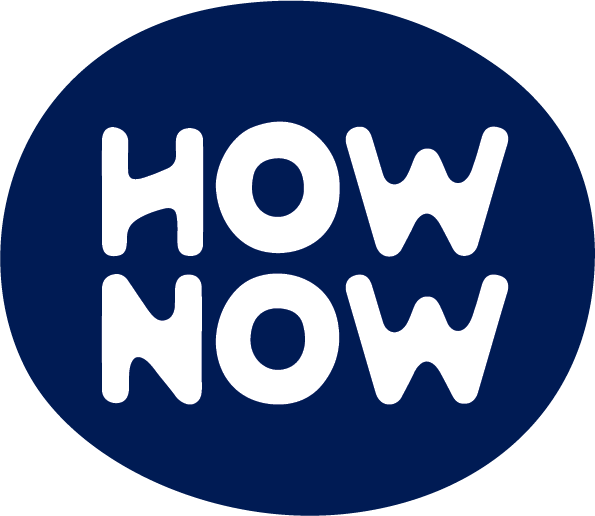By putting compassion for animals before financial gain, How Now dairy is paving the way forward for the industry.
At first glance, there’s little to suggest anything unusual is going on at How Now dairy, a small family-run farm located in Wunghnu, northern Victoria. The 370-acre farm has the same green pastures as its neighbours, a creek that runs through the property, and it has Rosie, Thelma, Judy and other female herd members chewing happily on the grass. Nope, it’s only when you look carefully that you notice that very thing you weren’t able to put your finger on before – calves. Not on the back of a truck and not in a separate pen, but happily walking alongside or suckling on their mamas. This has been a vision years in the making – and it’s one that Cathy Palmer, co-owner of How Now, says she hopes will pave the way forward for the dairy industry in general. “I empathise with the pressures placed on the current dairy farmers, but I’ve long believed we could do things differently and now I know first hand that it’s possible.”
An inconvenient truth
If you’re keen on your flat whites, yoghurts and cheeses, the truth behind conventional dairy production is not an easy one to face. Most people perhaps are not aware that to produce the milk we desire, cows are kept almost continually pregnant, with calves taken away from their mothers within 24 hours so that milk can be harvested for human consumption – a process that leaves both mother and baby deeply distressed and bellowing for each other for days. Palmer (and animal welfare groups) estimates between 400,000 and 800,000 of male calves (known within the industry as ‘bobby calves’) are sent to slaughter, as is a significant portion of females and while a cow has a natural life expectancy of 20-30 years, most dairy cows are slaughtered around the four-to-five-year-mark once their milk dries up.
“I empathise with the pressures placed on the current dairy farmers, but I’ve long believed we could do things differently and now I know first-hand that it’s possible.”
It was a revelation that former music executive Palmer says shook her to the core. “I’d been a vegetarian for many years, but I continued eating dairy and when I met my partner Les (Dr Les Sandles, a third-generation dairy farmer), he asked how I could reconcile my beliefs with consuming dairy products,” she says. “Once he told me about conventional milk production, my entire world changed and I knew if someone else wasn’t going to do something about it, it might as well be us.”

Chasing dreams
How do you spark a ‘kind milk’ revolution, an intuition-led journey free from the binds (or assistance) of texts, research and rules? Palmer says they entered what she calls “unchartered territory” with the dream of a small farm where all calves (including the bobby calves) would be raised and kept by Palmer and Dr Sandles – with no separation from the mothers, no abattoirs and no skimming from hungry calves. “We knew, early on, it would be the kind of place where we would only ever take the excess milk only after the calves had had their fill,” says Palmer. Their first 15 Jersey cows were purchased in August 2016 and the question was posed: if you build it, will they come?
18 months later, the business is thriving – “State Finalist in the 2017 Delicious Produce Awards”kind of thriving. Their herd has grown to 50 with 25 cows currently producing approximately 500 litres of milk each day. “The average cow will produce 20 litres of milk a day – but a calf only drinks around seven litres, so we only use what remains,” says Palmer who explains that from the age of two months, the calves are moved to a nearby paddock after their morning feed and reunited with their mums after the afternoon milking-session finishes – a system Palmer refers to as “crèche”.
“Once he told me about conventional milk production, my entire world changed and I knew if someone else wasn’t going to do something about it, it might as well be us.”
To reduce the number of bobby calves born, artificial intelligence is used to produce predominantly females using a more expensive type of semen that Palmer says has a 90 per cent success rate. “When you intend to keep every calf born, you can’t have tens or hundreds of male calves who grow up to become bulls running around,” she says. “And while this isn’t the most financially viable option when it comes to earning a living through dairy, we’ve stuck to our guns [so] that kindness and compassion should triumph over economics every time.”

Moving forward
Every business has its own set of unique challenges and How Now dairy is no different. The duo milk, process and distribute the milk around Melbourne, Geelong and Shepparton themselves and Palmer often finds herself at the receiving end of hate campaigns from both vegans and conventional dairy farmers (Palmer only ever responds by continuing to post pictures of happy calves with their happy mums).
“And while this isn’t the most financially viable option when it comes to earning a living through dairy, we’ve stuck to our guns [so] that kindness and compassion should triumph over economics every time.”
They’ve branched out into cheese and cream with the view of extending into yoghurt and butter, but says business expansion comes down to two things: remaining committed to their ‘kindness first’ goal, and finding like-minded farmers in other states to buy into the idea and take a gamble on something new. “We’ve already had some great discussions in getting the How Now message into all the different states and I hope as well go, we’ll also get the message out that this could very well be the way of the future.”
Images by Serena Hunt
